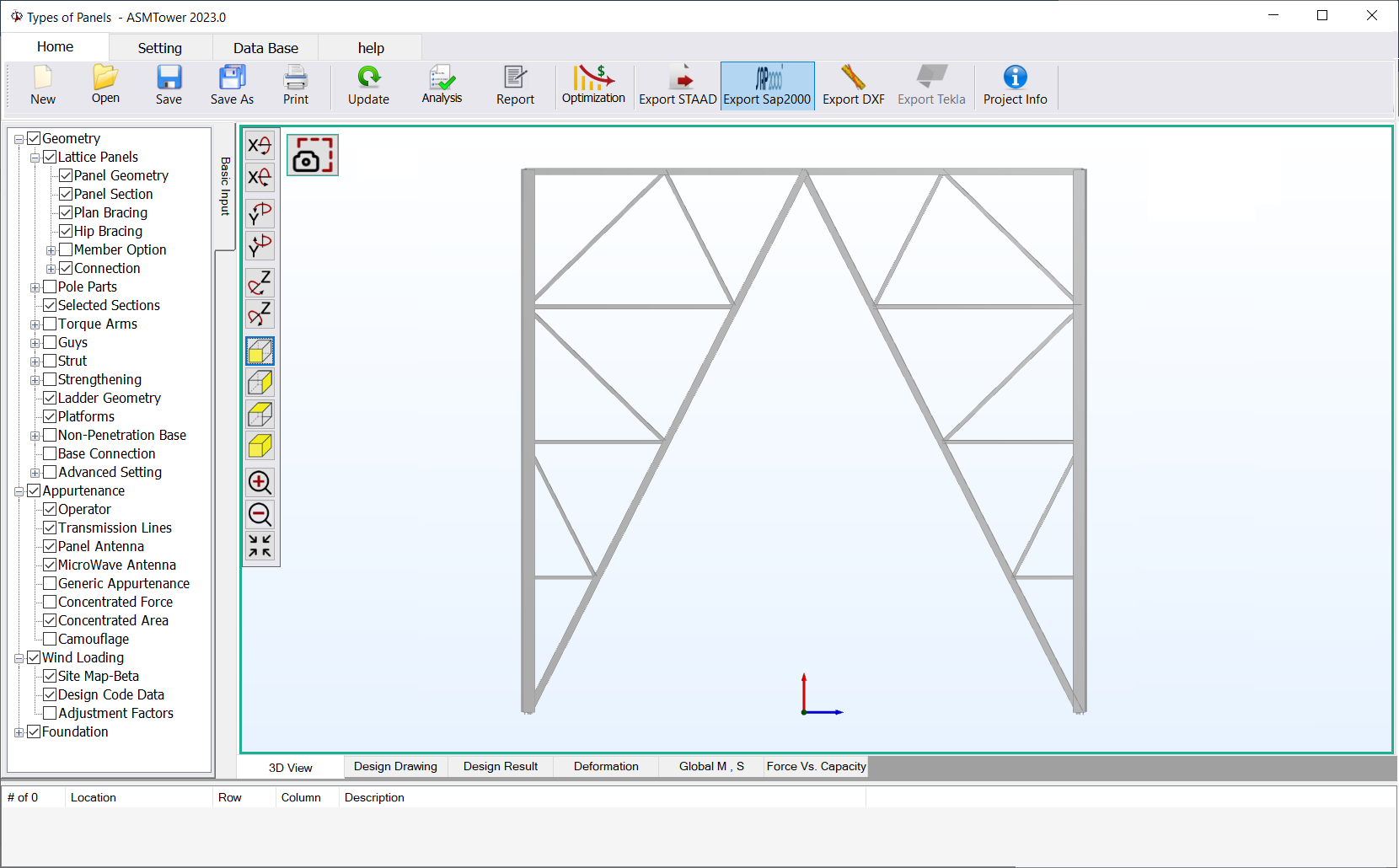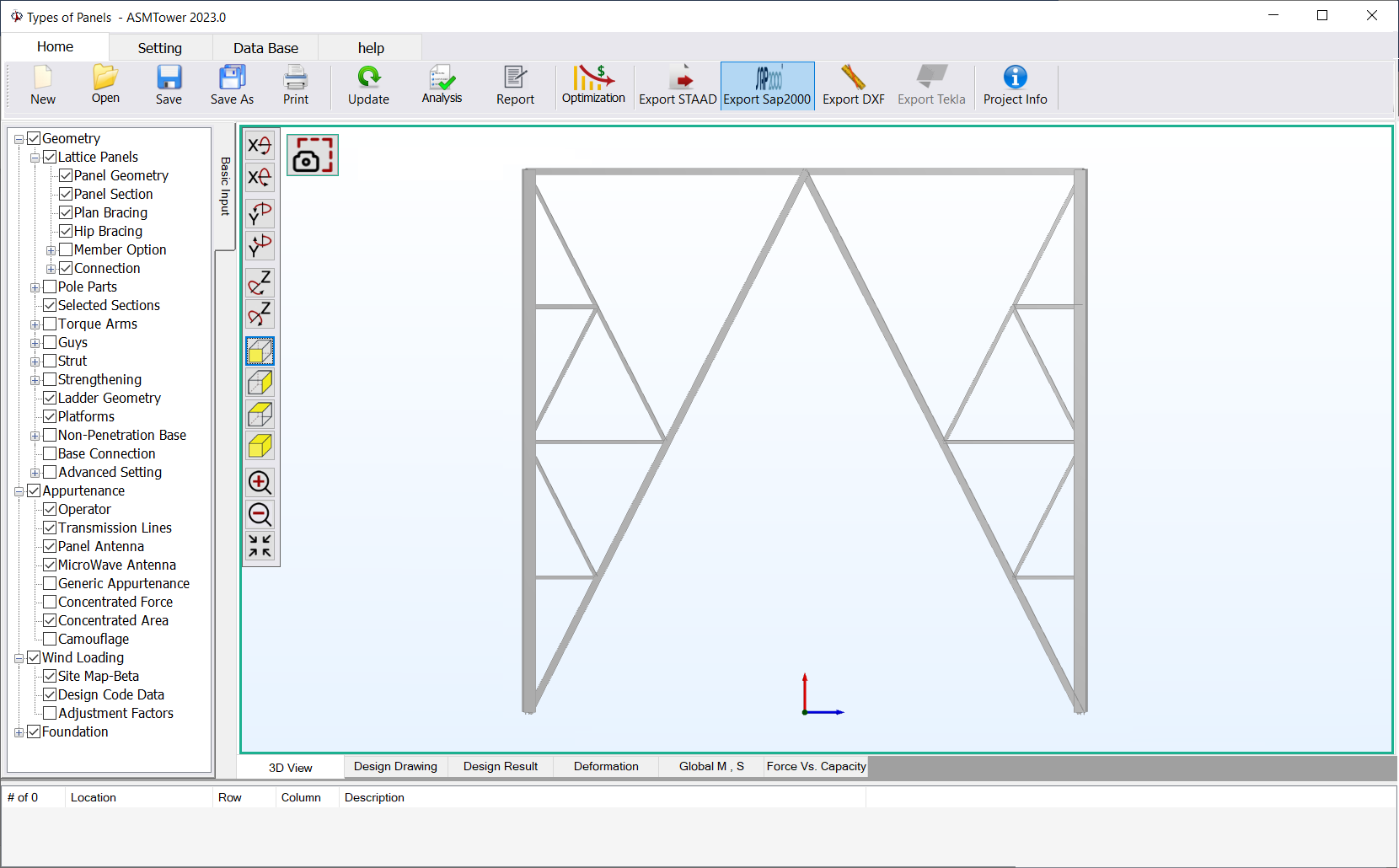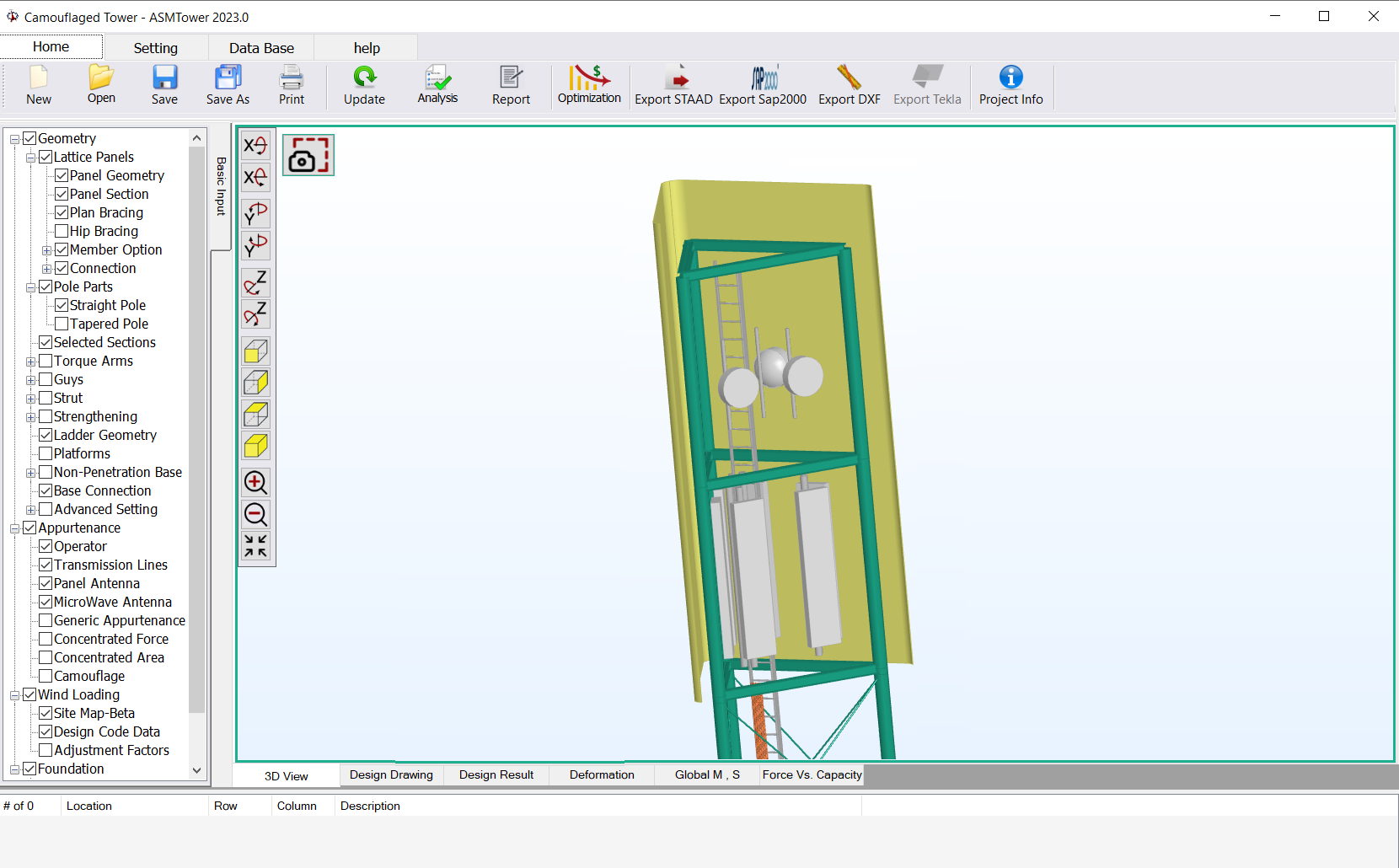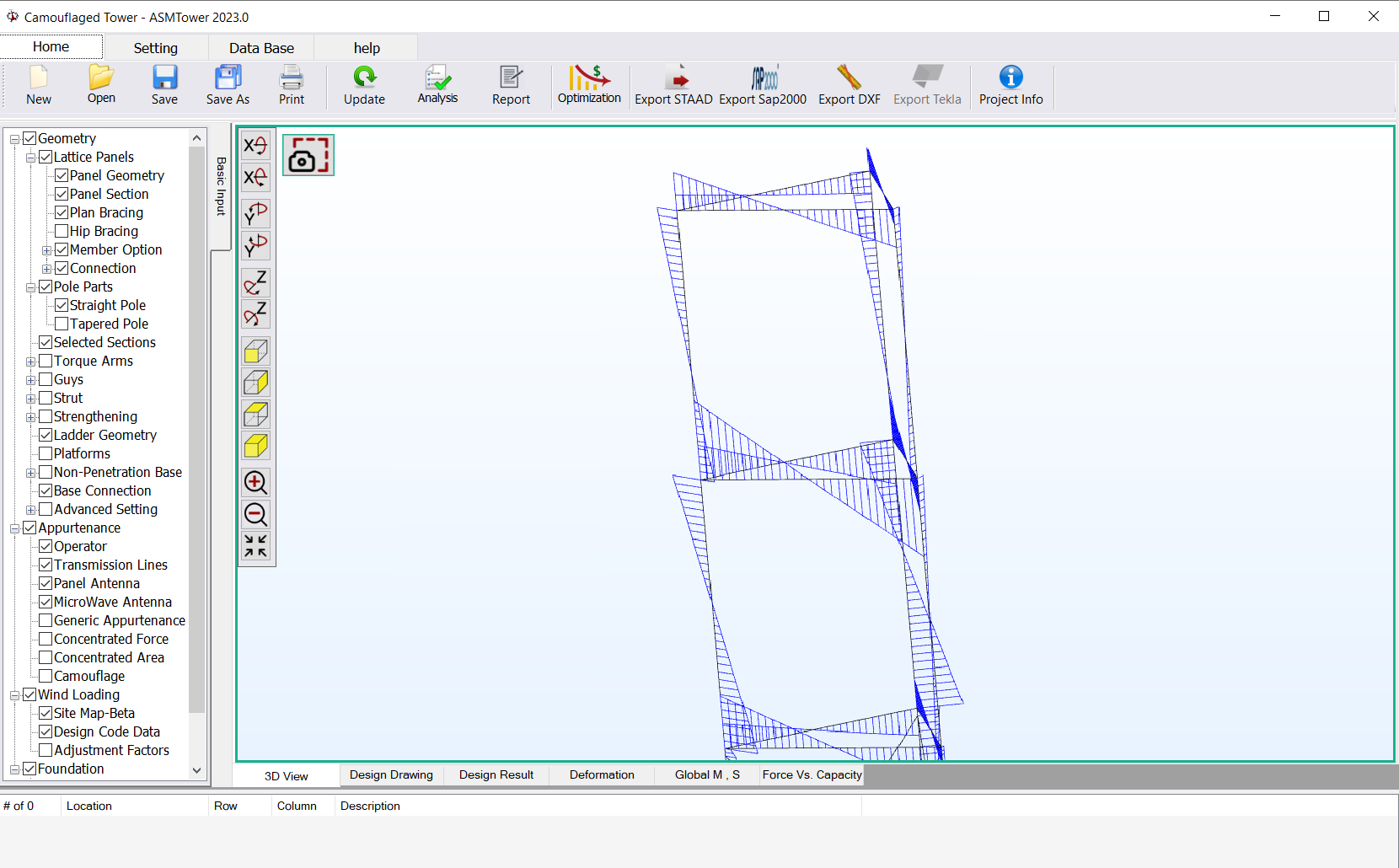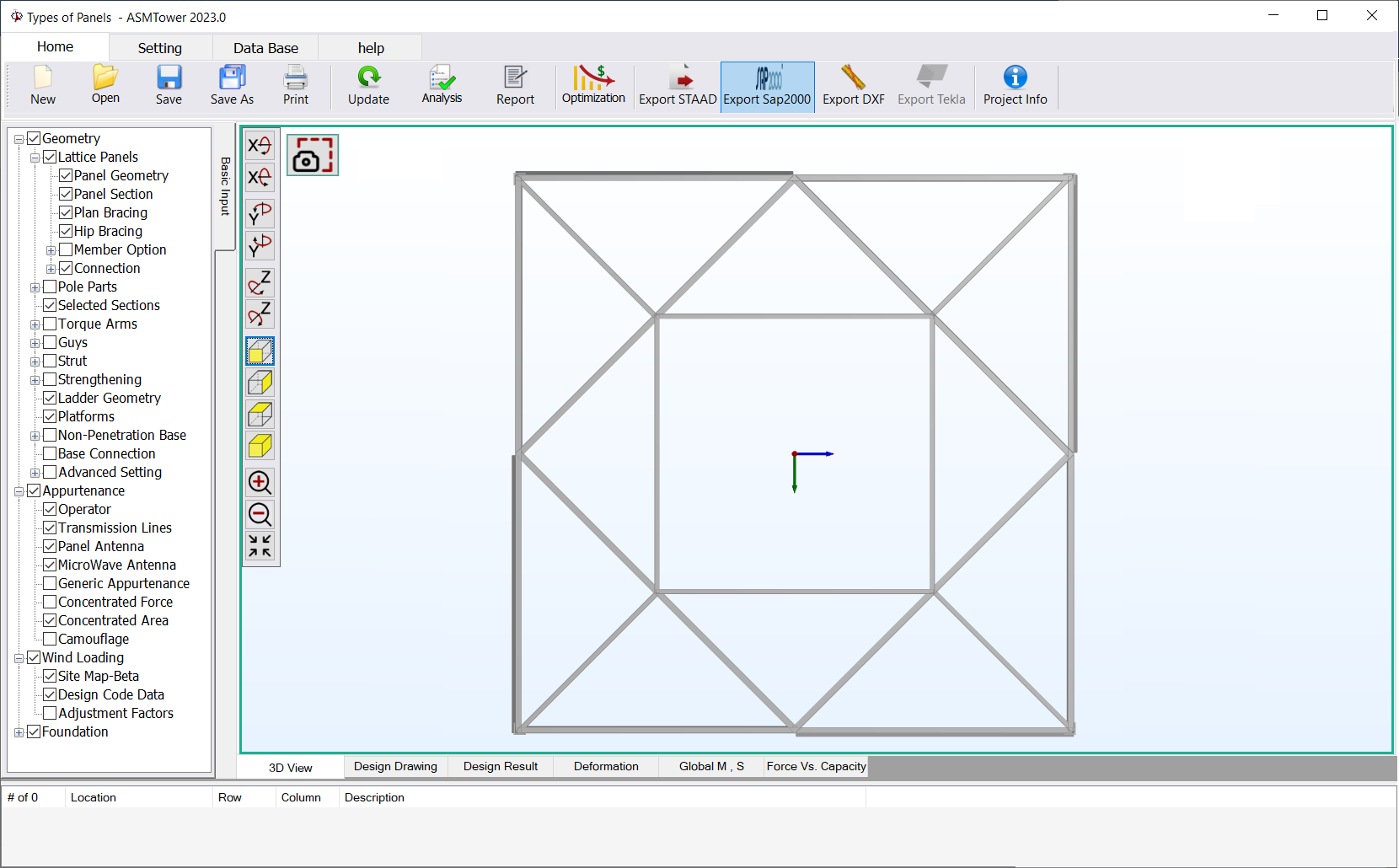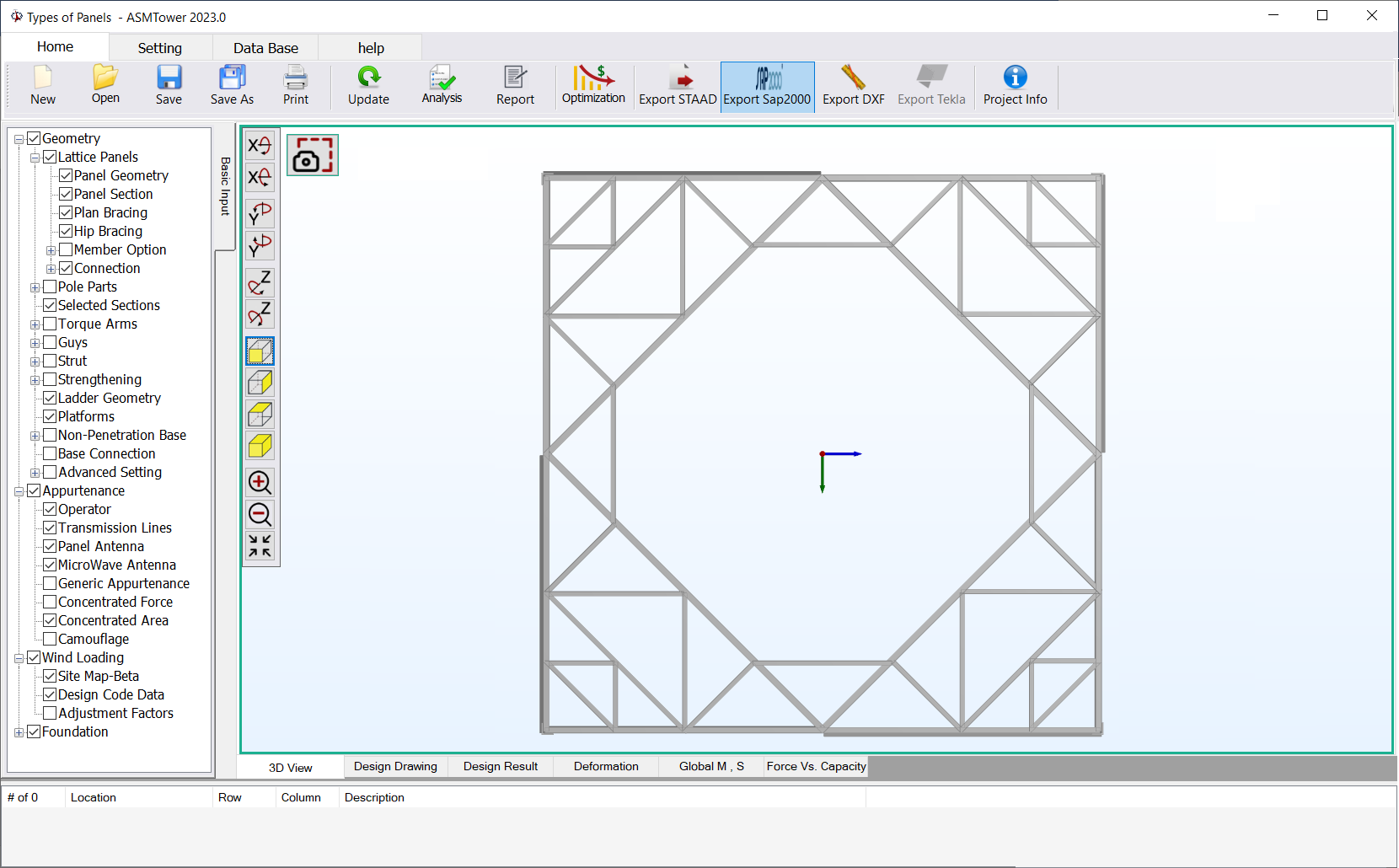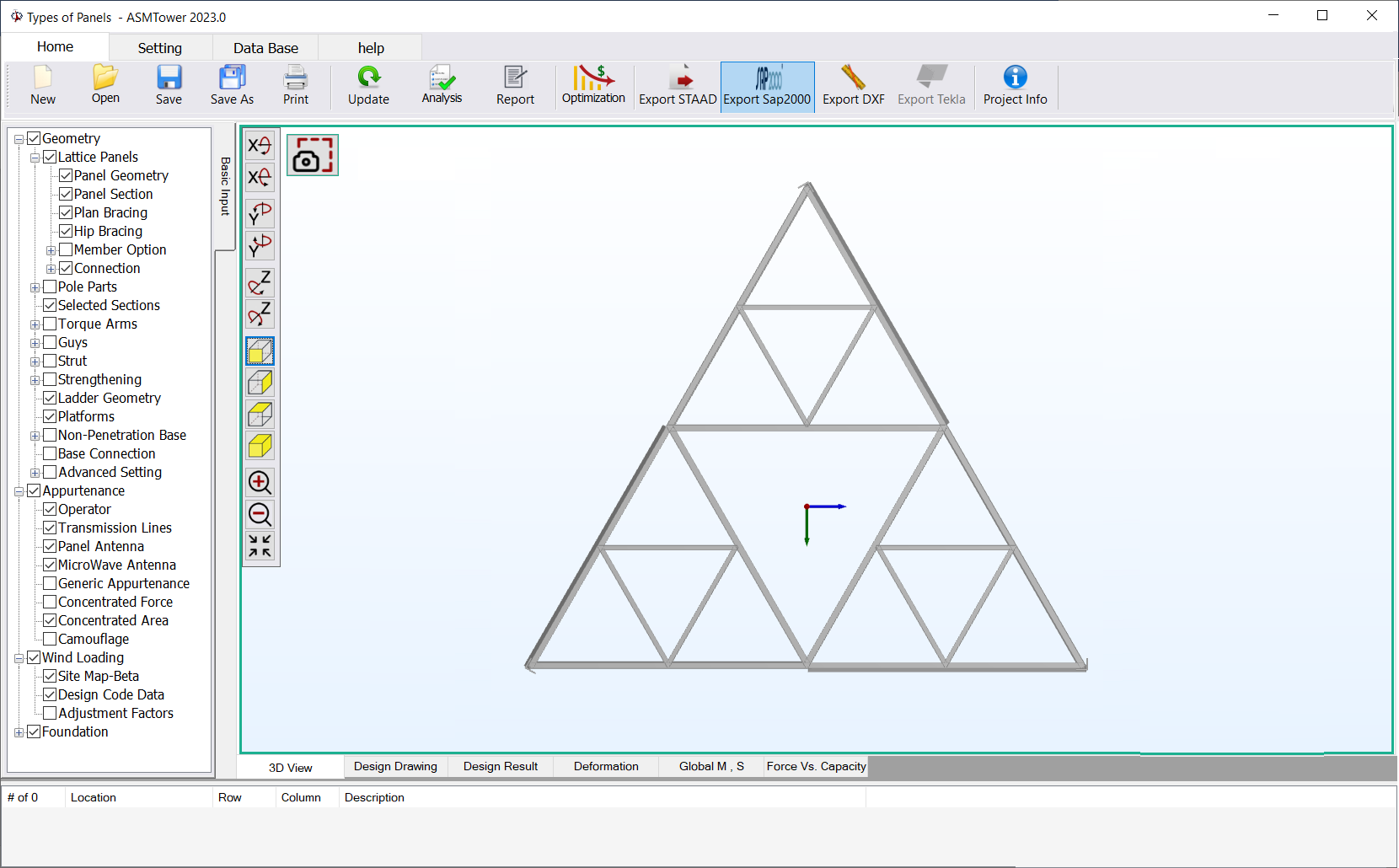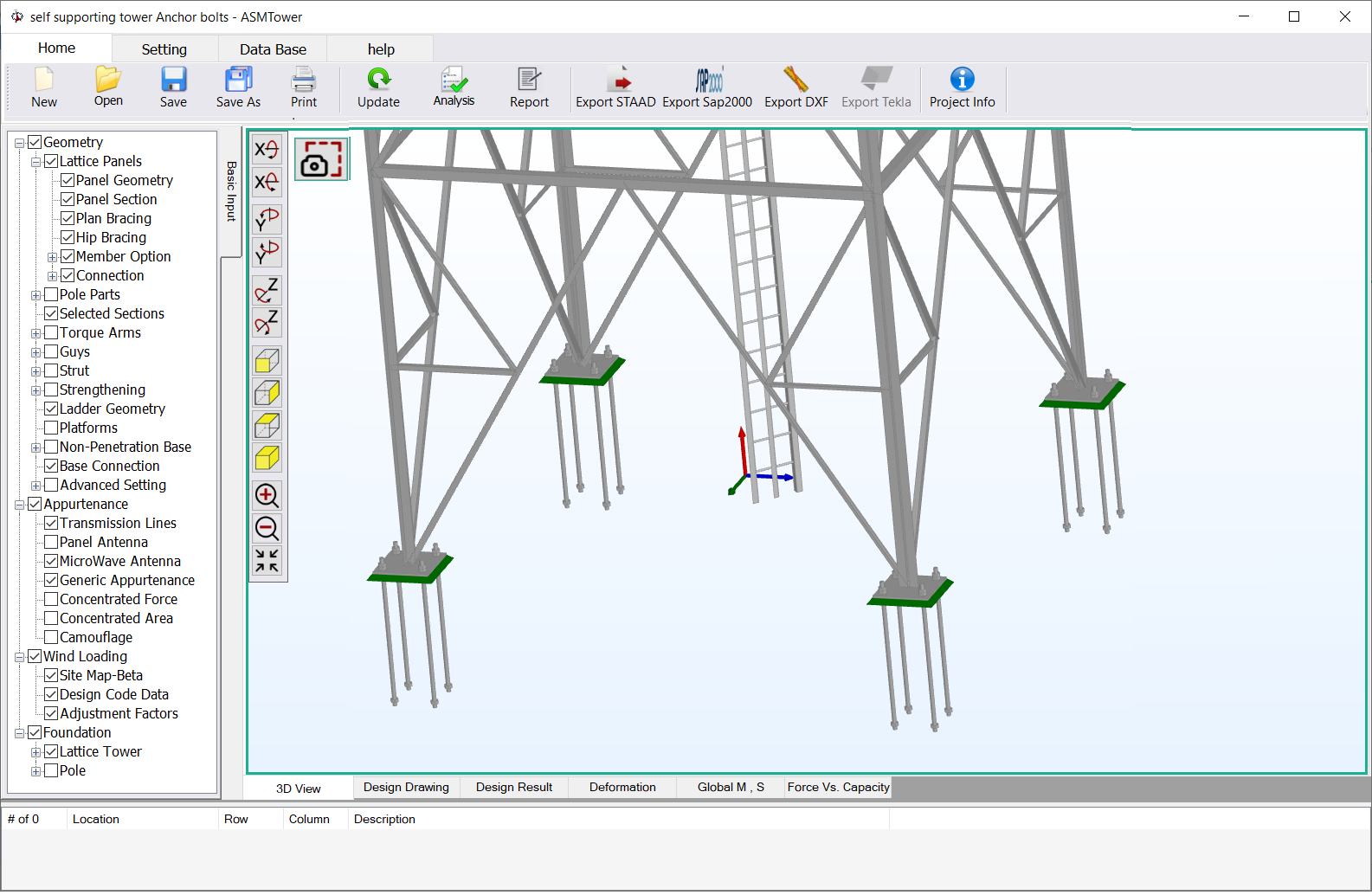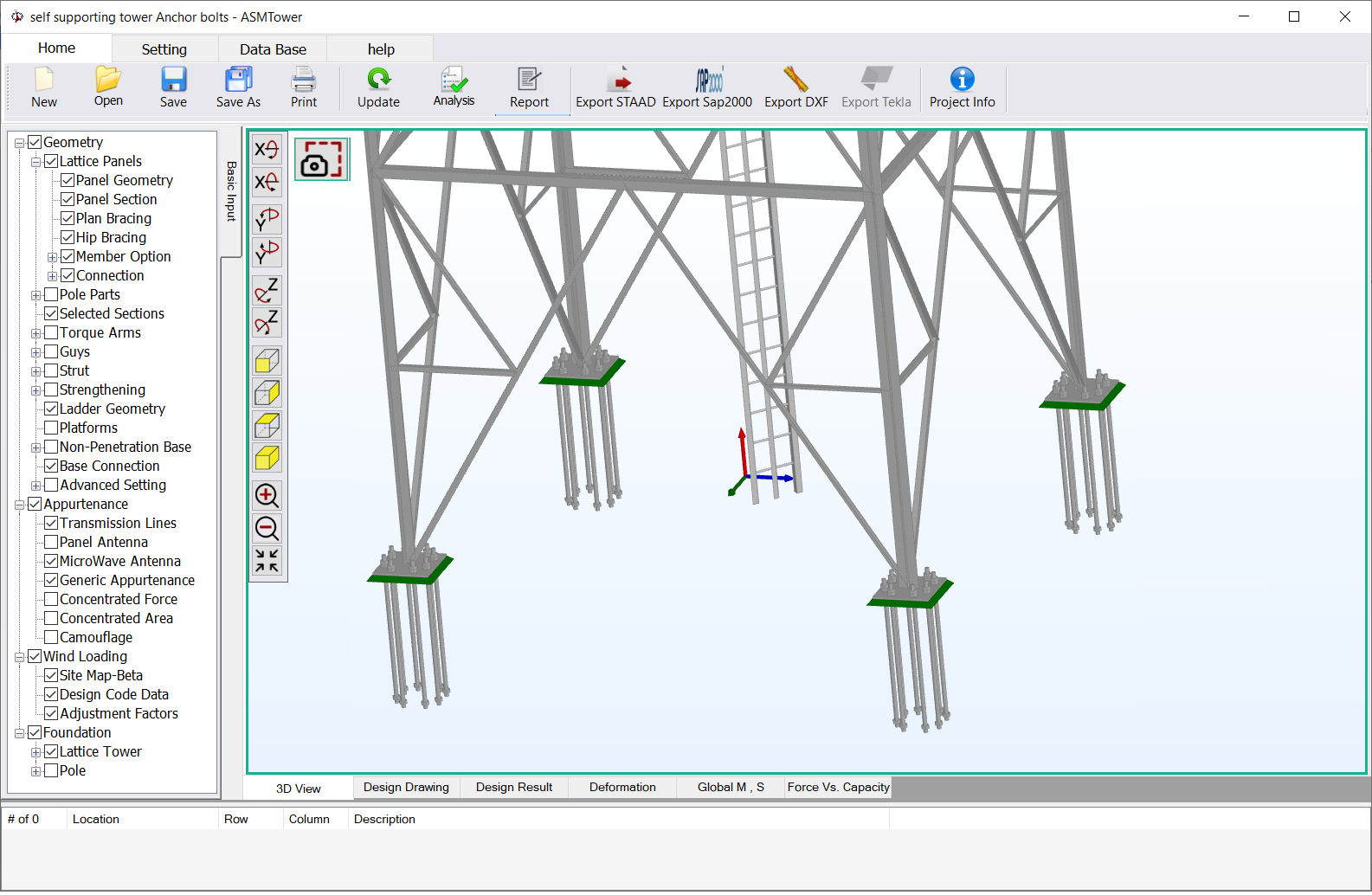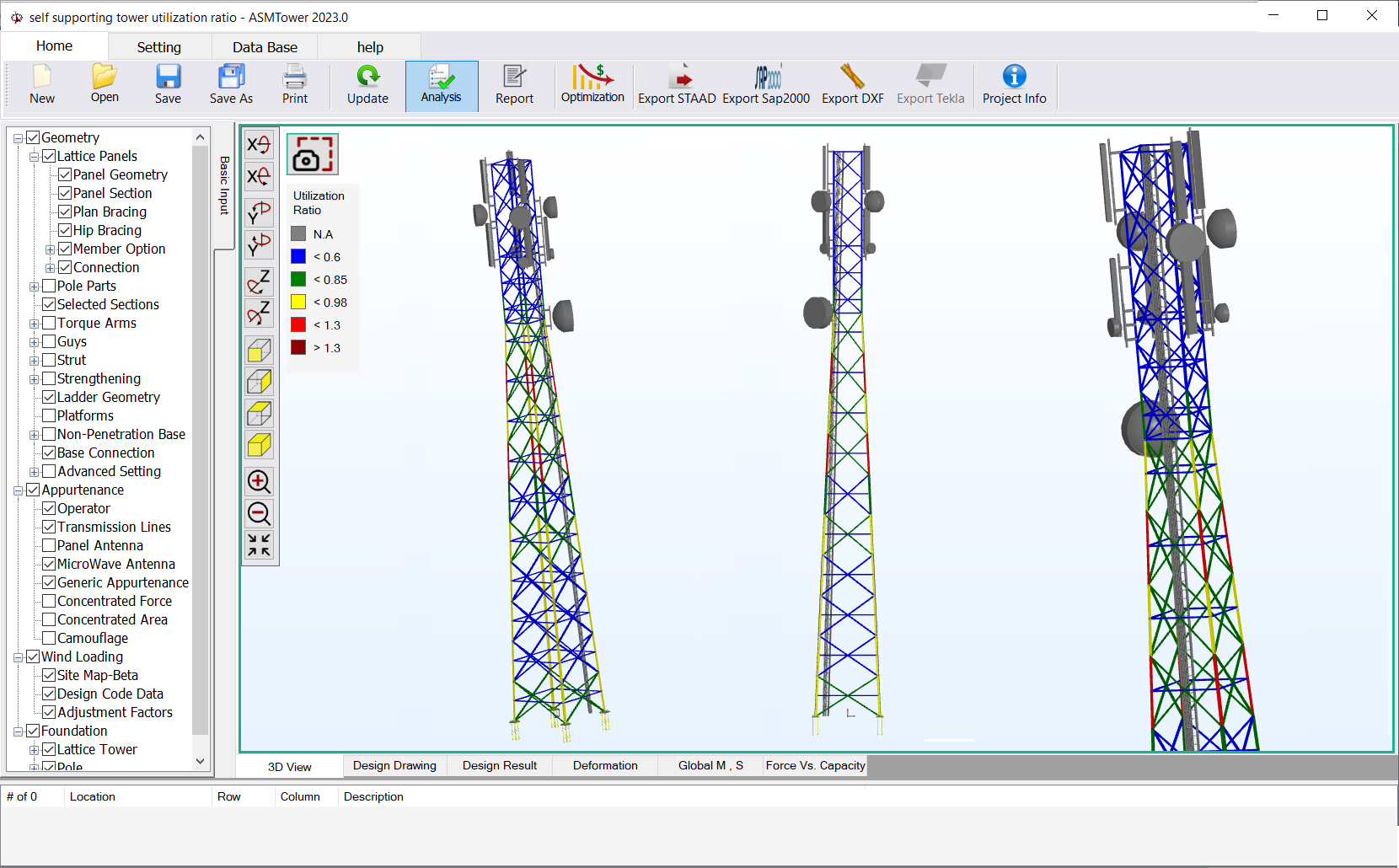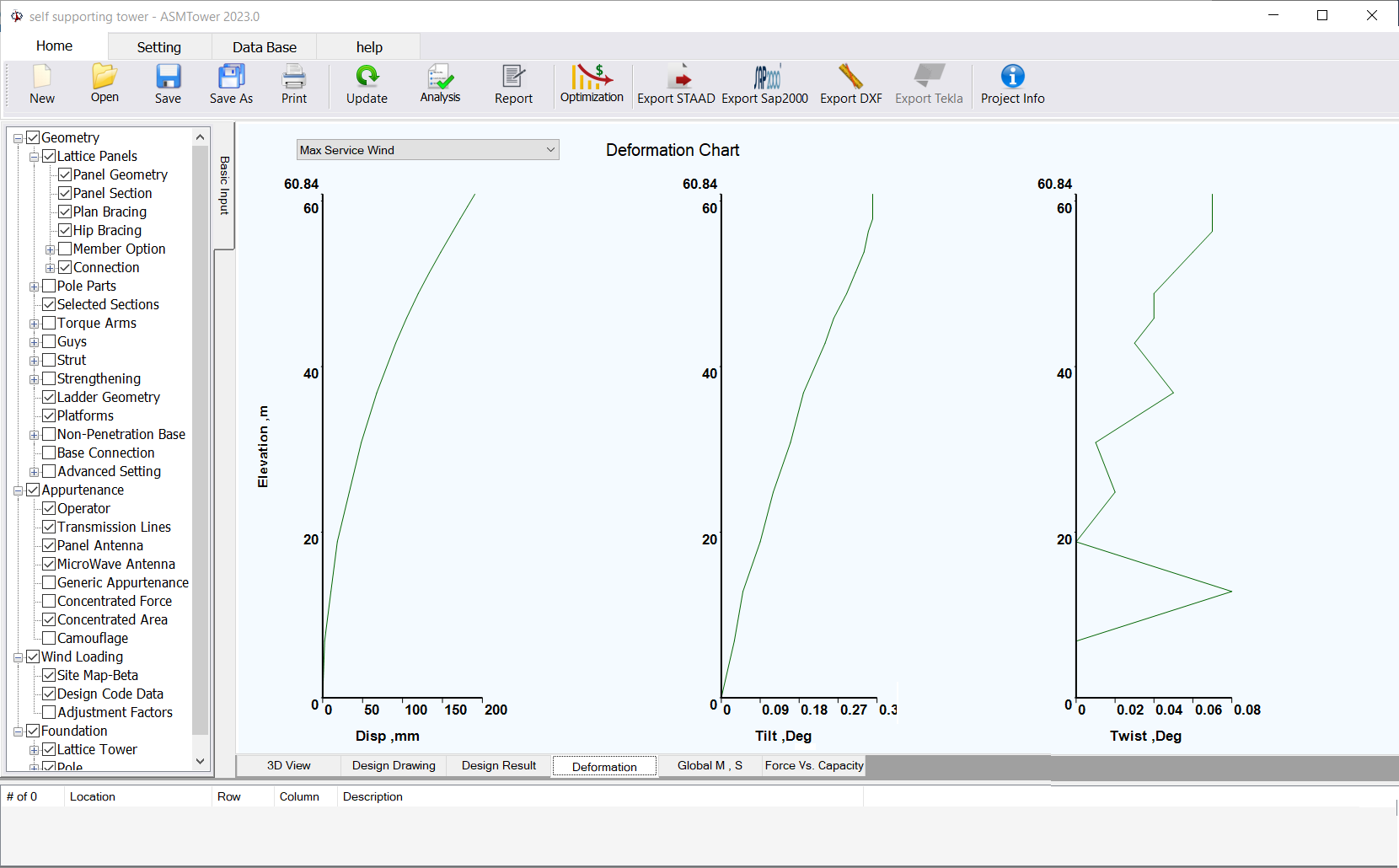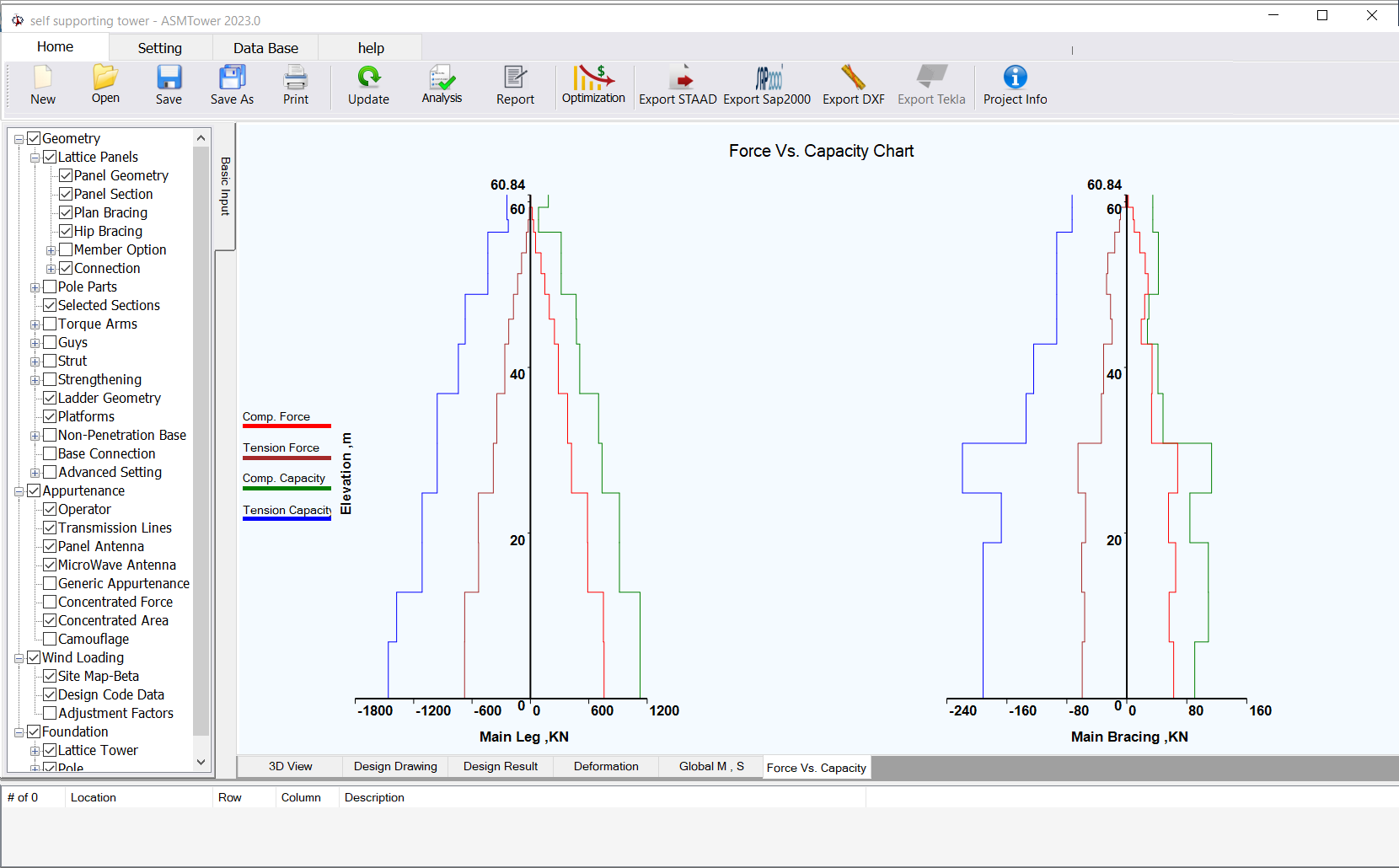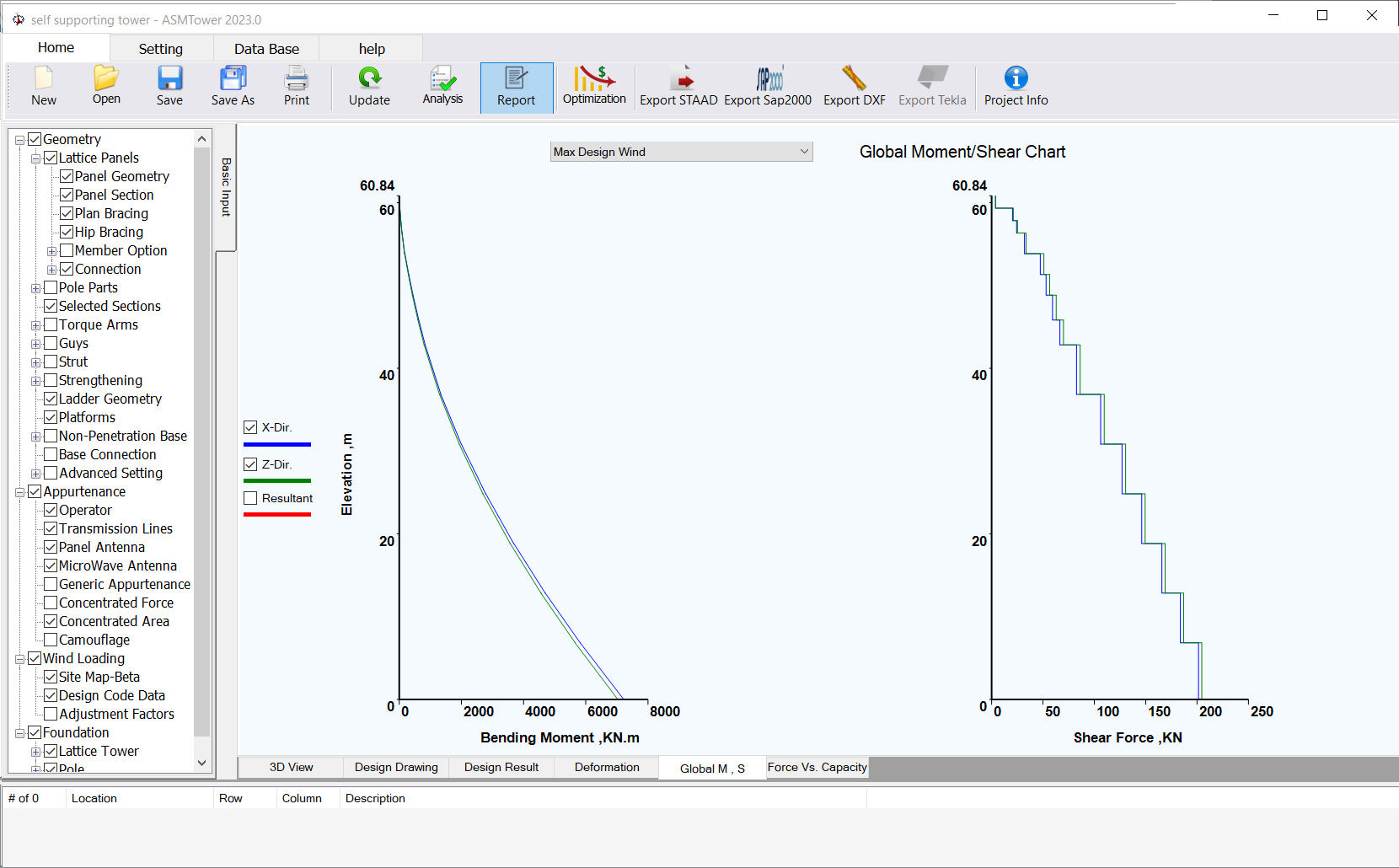Self-supporting tower
Self-supporting towers and lattice towers are among the most commonly used structures for supporting antennas due to their numerous benefits. With ASMTower’s design solutions, designing self-supporting towers becomes a fantastic task, and you can create an economic design without compromising on quality or safety.
One major benefit of self-supporting towers is their ability to reach heights exceeding 100m with less steel weight than monopole towers. This makes them an economic choice for those looking for high and sturdy structures. Additionally, self-supporting towers take up less space compared to guyed towers, which require more space for guy wire base installation, making them unsuitable for cities.
Whether you’re in the process of designing a new economic telecom tower or checking an existing structure and proposing strengthening solutions, ASMTower is a powerful software tool you can rely on.
Types of towers supported by ASMTower:
- 4 leg self supporting tower
- 3 leg self supporting tower
Self-supporting Tower Design Standards & Codes
ASMTower supports the design of self-supporting towers according to various industry standards, including :
- The American standard, with the latest addendums:
- ANSI/TIA-222-G
- ANSI/TIA-222-H
- ANSI/TIA-222-I
- The European standard EN1993-3-1 with the following national annexes:
|
|
General EN
|
EN 1991-1-4:2005 EN 1993-3-1:2006 CEN Annex |
|
|
Cyprus
|
NA to CYS EN 1991.1.4:2005 NA to CYS EN 1993.3.1:2006(AC:2009) |
|
|
Denmark
|
EN 1991.1.4 DK NA:2007 DS/EN 1993.3.1 DK NA :2013 |
|
|
France
|
NF EN 1991.1.4/NA/A1 Juillet 2011 NF EN 1993-3-1/NA2008-07 |
|
|
Germany
|
DIN EN 1991.1.4/NA:2008-9 DIN EN 1993.3.1:2010-12 |
|
|
Ireland
|
IS EN 1991-1-4:2005/NA:2013 NA:2010+A1:2020 to I.S. EN 1993-3-1:2006&AC:2009 |
|
|
Netherlands
|
NEN-EN 1991-1-4+A1+C2:2011/NB:2019+C1:2020 NEN-EN 1993-3-1:2007/NB:2012 |
|
|
Poland
|
PN-EN 1991.1.4 listopad 2008 PN-EN 1993.3.1 Listopad 2008 |
|
|
Romania
|
SR EN 1991.1.4:2006/NB:2007 GEN EN 1993.3.1 :2006 |
|
|
Singapore
|
NA to SS EN 1991.1.4:2009 GEN EN 1993.3.1 :2006 |
|
|
Sri Lanka
|
NA to SLS EN 1991.1.4:2019 GEN EN 1993.3.1 :2006 |
|
|
United Kingdom
|
BS EN 1991.1.4:2005+A1:2010 NA to BS EN 1993-3-1 :2006 |
Types of panels supported in Lattice tower design:
ASMTower offers a variety of panels that can be selected for modeling self-supporting towers, and the user has the ability to adjust the size of each member to their specifications.
“X” Bracing types Supported in Lattice tower design:
Both diagonals are continuous.
ASMTower software considers the diagonal bucking length at each wind direction and evaluates the buckling length based on whether both diagonals are under compression or compression-tension. In the latter case, the tension bracing provides lateral support for the compressive bracing at the diagonal’s crossover point. Additionally, when modeling a self-supporting tower, ASMTower assumes that the secondary horizontal member at the diagonal’s crossover point is discontinuous.
Both diagonals are discontinuous.
The ASMTower software assumes a continuous secondary horizontal member at the diagonal crossover in order to provide the necessary stability for the panel in this scenario.
Plan bracing at the crossover point.
Plan bracing will act as a lateral support for both main diagonals and the secondary horizontal member at the crossover point in this scenario.

Vierendeel Panel and camouflaged self-supporting towers.
ASMTower offers the option of designing Vierendeel panels, which are often used in camouflaged structures where steel members cannot be installed in front of the antennas. The software automatically calculates the bending moment on the Vierendeel system and performs designs for all types of sections, taking into account the bending moment.
Plan Bracing and Hip bracing in lattice tower.
ASMTower provides the capability to model, analyze, and design plan bracing and hip bracing for self-supporting towers with 3 or 4 legs. Plan bracing is primarily used to enhance the rigidity of self-supporting towers and reduce the buckling length of horizontal members, whereas hip bracing reduces the buckling length of diagonal members.
ASMTower’s design capabilities for plan bracing take into account the bending moment results from both the weight of the members and any potential ice buildup. With a variety of different bracing types available to choose from, users have complete control over the section size for each member within the bracing system.
Structural Design Optimization of Telecom Towers
ASMTowr is an impressive software that can design self-supporting towers and perform design optimization with minimal effort and time. It offers great flexibility to designers by allowing them to control the sections and the final utilization ratio for the main leg and bracing members.
ASM has two methods of Optimization:
The first optimization method in ASMTower, which involves keeping the width of the tower unchanged and changing members to reach the specified utilization ratio, is a useful approach to tower design. By maintaining a constant width, the tower can be designed to fit within a specific space or meet certain aesthetic requirements. The software then optimizes the design by adjusting the sizes of the members to achieve the desired utilization ratio.
The second optimization method in ASMTower involves changing both the face width and members to reach the least weight. This method allows the user to input a range for the bottom face width and the top face width, and the software then optimizes the design by adjusting both the member sizes and the face widths to achieve the desired result.
What’s even more impressive is that it provides detailed charts that describe the total weight of each iteration, as well as the accompanying face width and deflection. This level of detail and analysis can be incredibly helpful for designers, as it allows them to make informed decisions about the design and make adjustments as needed.
By automating and optimizing the tower design process and providing detailed analysis, ASMTowr can save a lot of time and money for designers, making it very valuable in the industry.
Existing latticed Towers Strengthening.
As the demand for increased capacity and additional panel antennas and microwave dishes on self-supporting towers has grown, the need to strengthen existing towers has arisen. ASMTower offers solutions for strengthening self-supporting towers, allowing designers to use built-up sections of any form to increase the capacity of members, while also being able to add finite element members for reinforcement.
ASMTower automatically calculates wind loads on the strengthening members and performs all necessary analyses and checks according to the selected standards.
Lattice tower connection.
ASMTower is a powerful software that enables the design of main leg splice, diagonal members, and horizontal members’ connections, taking into account single and double shear with bearing checks for the main leg, bracing, and gusset plate.
Additionally, ASMTower can model and analyze main leg flanged connections for pipe sections. In this type of connection, the software automatically calculates the additional forces in bolts due to prying forces and checks the adequacy of the flange thickness.

Anchor bolt for Lattice tower base connection.
ASMTower allows the user to model anchor bolts at the base of the tower and define the arrangement and geometry of the bolts.
There are various types of anchor bolts that ASMTower supports, such as headed anchors, L-hooks, J-hooks, and deformed anchors. ASMTower performs a pull-out check and calculates the required embedded length based on the foundation reinforcement.
Foundation of tower:
- ASMTower supports the design of mat foundation and monopile for self-supporting towers in the same model with the main structure.
- Structure’s reactions are automatically reflected on the foundation which reduces the time consumed and makes no space for human mistakes.
- Mat Foundation drawing can easily be generated and exported in a CAD format, with steel and concrete quantity estimation.
ASMTower Output
- ASMTower provides a detailed 3D view of the tower, including members and appurtenances, allowing for easy checking of input data and reducing the risk of errors.
- The software also color members based on their utilization ratio, helping users identify unsafe sections of the tower.
- Additionally ASMTower generates valuable charts and diagrams, such as deformation conditions, displacement, tilt and twist, and global bending moment and shear diagrams, with the ability to show deformed shapes at various wind directions and load combinations.
- Users can also generate comprehensive output reports in RTF format, with the ability to adjust report settings and select specific components to be included in the report.



